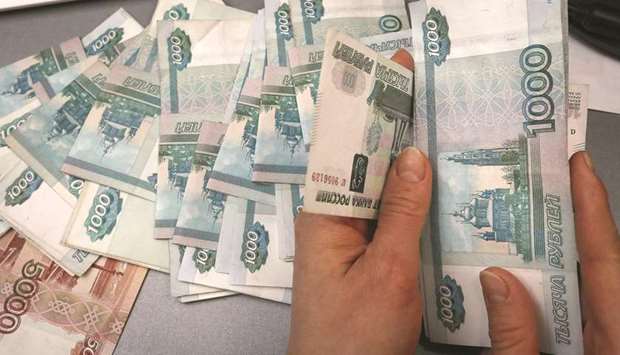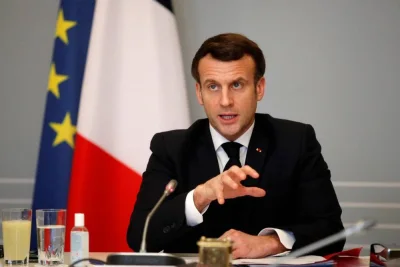Russia wants the rouble to stop acting like an oil currency.
A fiscal mechanism unveiled this year, under which the government absorbs all additional revenue when crude is above $40 a barrel, marks a “change in ideology” from the previous mechanism designed to ensure budget stability, according to Deputy Finance Minister Vladimir Kolychev. Given that the central bank is allowing the market to determine the exchange rate, the new approach sets the task of freeing the rouble from oil as the “main goal,” he said in an interview in Moscow.
“It’s an important change in policy,” said Kolychev, 33, who joined the Finance Ministry two years ago from VTB Capital. “It’s especially important under a free float, when there’s no artificial restraint on the rouble.”
The revamp has been among the most far-reaching efforts by Russia to pry the economy out of its reliance on energy and insulate it from the ups and downs in crude after its crash gutted the finances of the government and households alike. And while Russia and Opec have teamed up to stabilise oil, Kolychev says risks remain that it could again fall below $40, with an equilibrium price seen between $40 and $50 over the next five to seven years.
“The deal between producers over temporary output curbs will help eliminate excess stockpiles,” he said. “But it’s hard to say if the market will rebalance from the point of view of demand and supply at the moment the accord expires.”
As the downturn in commodities rippled through the economies of oil-producing nations, their responses have differed. Saudi Arabia, the dominant Opec power, is pushing ahead with its blueprint for a post-oil era, which includes subsidy cuts and new taxes as well as a plan to expand its sovereign wealth fund into the world’s largest. Russia, the world’s biggest energy exporter, has kept its fiscal and monetary policy tight, focusing its efforts on trying to unlock domestic investment by reining in inflation and encouraging savings.
Elevated interest rates have also made Russian assets an investor favourite. During the four months that the Finance Ministry conducted its foreign-exchange purchases, which netted 262bn roubles ($4.6bn), the rouble has kept up its rally, gaining more than 3% in the period. The central bank has attributed its strengthening in the first quarter to sales of foreign revenue by exporters and large tax payments, not its carry-trade appeal.
Should the economy be experiencing any “serious changes,” rouble fluctuations are possible, with the “substantial inflow of capital” since the start of the year pushing the currency from its “equilibrium value,” according to Kolychev.
“We have to comply with the budget rule if we don’t want the rouble’s exchange rate, interest rates and the structure of prices to jump back and forth,” he said. “Now we are no longer just collecting revenue but also defending domestic conditions from volatility in oil.”
Officials believe Russia has hit on a budget solution for steering the economy through good times and bad. If oil dips below $40 for an extended period, the government can draw down its Reserve Fund to finance the deficit, Kolychev said. But if the sovereign coffer shrinks to 5% of gross domestic product, spending from it will be limited to 1% of economic output a year, with the rest of the shortfall covered with borrowing or by reducing the non-oil deficit.
The approach has drawn criticism of Alexei Kudrin, the former finance minister who oversaw the creation of a forerunner to Russia’s wealth funds more than a decade ago. The crude-price cutoff at $40 is “too tough,” with $45 being a “reasonable compromise,” he said in an interview.
“The question is whether the country will be able to develop health care, education and infrastructure without an increase in spending,” Kudrin said. “The big danger is that we don’t support those areas that underpin the foundation of economic growth.”
The Finance Ministry projects the fiscal gap will narrow to 2.1% this year, from 3.7% in 2016, on the back of a surge in revenue that may result in a windfall of more than 1tn roubles.
Energy contributes about 40% to budget income. “Russia should be more focused on lower oil-price volatility,” Jeffrey Currie, head of commodities research at Goldman Sachs Group, said in an interview in St Petersburg. “Reduced volatility in both the oil price and the rouble makes budget planning much easier to balance in the end.” The rouble’s link with oil is proving resilient. Its 30-day correlation with the price of Brent is now near 0.6, compared with 0.2 on February 7, when the purchases began. A value of 1 would mean the assets are moving in lockstep.
The authorities follow a formula used to calculate monthly operations on the currency market in a “mechanical way,” meaning there’s nothing discretionary about the volumes the Finance Ministry soaks up, according to Kolychev.
“Only by way of strict compliance with rules that are transparent for market participants is it possible to build up the necessary trust,” he said. Success in shielding the economy from oil will “provide a reliable foundation for diversification,” Kolychev said.

An employee counts rouble banknotes at a shop in Krasnoyarsk, Russia. The rouble’s link with oil is proving resilient. Its 30-day correlation with the price of Brent is now near 0.6, compared with 0.2 on February 7, when the purchases began.


